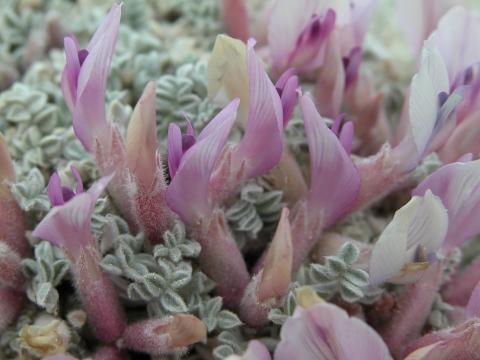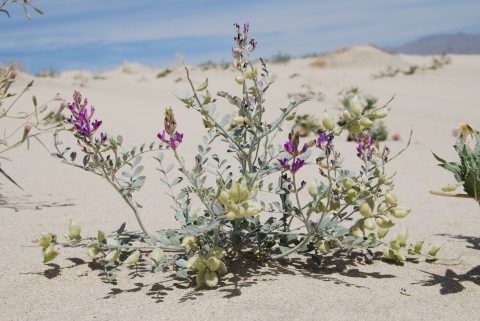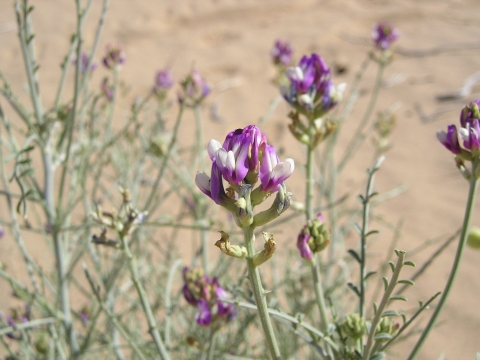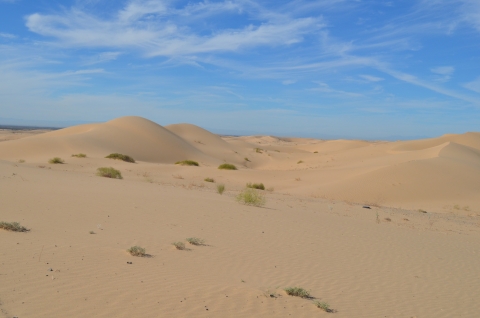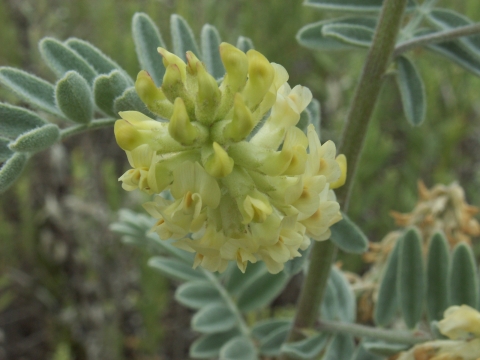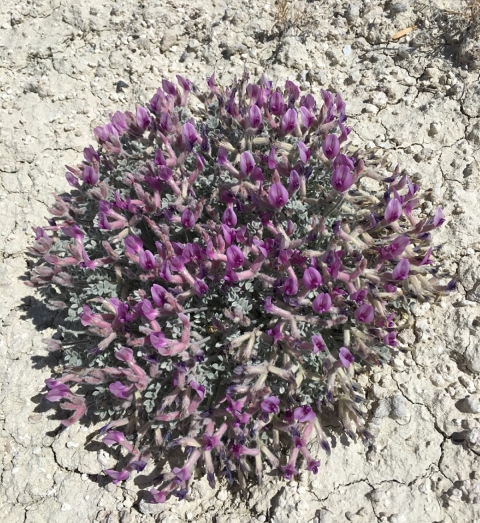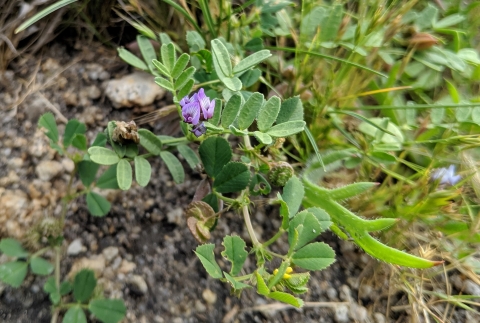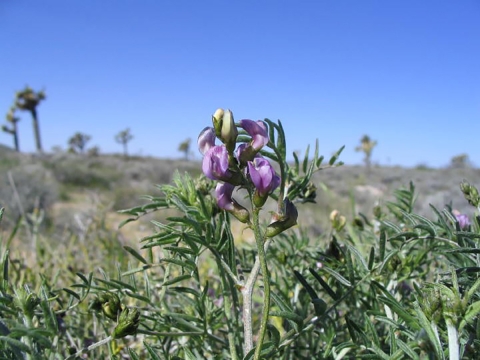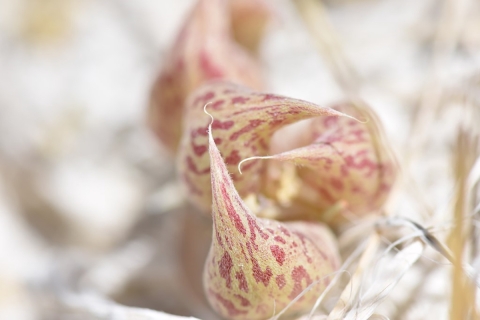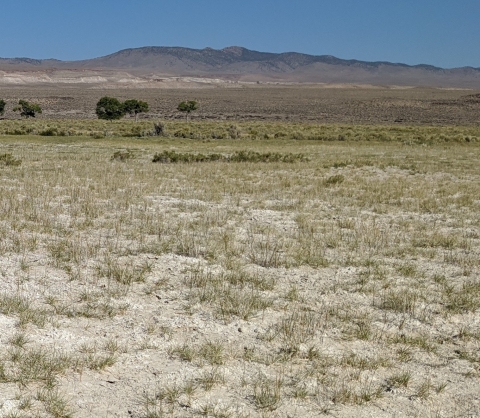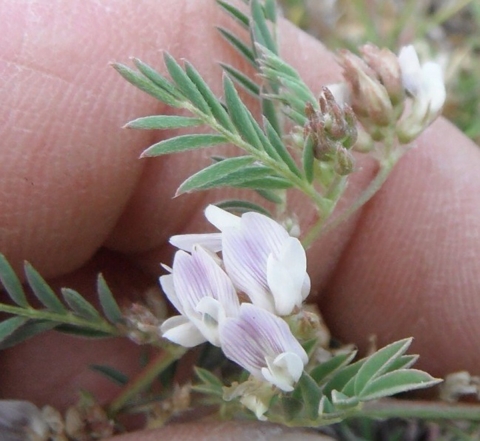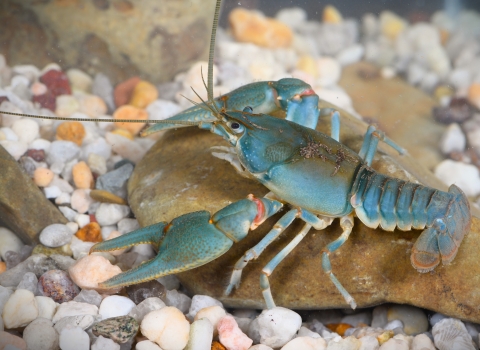Milk-vetches are part of the largest group of plants in the world known as Astragalus and consists of about 3,000 identified species. This group is part of the legume family, which includes peas. In California, Nevada and the Klamath Basin, some of these milk-vetches grow in habitats that are incredibly inhospitable to most plants. Let’s meet a few of these tough and resilient beauties.
Coachella Valley milk-vetch
Astragalus lentiginosus var. coachellae
To the north, the Coachella Valley area of Riverside County is home to the federally endangered Coachella Valley milk-vetch. This species of milk-vetch relies on wind-driven (aeolian) and water-driven processes to replenish its sandy habitat on the valley floor. The Coachella Valley Multiple Species Habitat Conservation Plan, approved by the U.S. Fish and Wildlife Service in 2008, is a landscape-scale conservation plan that will conserve the Coachella Valley milk-vetch and 26 other species of plants and animals into the future.
Peirson’s milk-vetch
Astragalus magdalenae var. peirsonii
Imperial County, California, is where you will find the Algodones Dunes, a 45-mile band of windswept sands occurring in a narrow band trending from northwest to southeast. The federally threatened Peirson’s milk-vetch is found in the bowls of these dunes. A long tap root enables Peirson’s milk-vetch to withstand strong winds and to reach moisture deep underground. Peirson’s milk-vetch is threatened by habitat loss and impacts to plants from off-highway vehicle (OHV) use. The Service worked with the Bureau of Land Management to develop the Imperial Sand Dunes Recreation Area Management Plan that sets aside protected areas for the plant while leaving other areas open to OHV recreation.
Braunton’s milk-vetch
Astragalus brauntonii
In the mountains above the City of Los Angeles, California, you can find the federally endangered Braunton’s milk-vetch. Populations of this milk-vetch occur within the Santa Monica Mountains National Recreation Area and Topanga Canyon State Park; and on other state, public and private lands in Los Angeles and Orange counties. Reaching a height of more than 3 feet, this particular milk-vetch is one of the tallest members of the genus.
Ventura Marsh milk-vetch
Astragalus pycnostachyus var. lanosissimus
Once thought to be lost forever, Ventura marsh milk-vetch was rediscovered by a Service biologist in 1997 on land slated for development near Oxnard, in Ventura County, California. This last known population was saved by the establishment of the Ventura Marsh Milk Vetch Preserve. Today, four populations of this endangered milk-vetch produce seeds to maintain the entire population. The species once thrived along California’s southern coast in Los Angeles and Ventura counties. Ventura marsh milk-vetch is a member of the pea family and likes to live where marshes meet upland habitat. Research also shows that this particular milk-vetch’s seed production may be dependent on pollinators like bumble bees, carpenter bees, and butterflies.
Ash Meadows milk-vetch
Astragalus phoenix
Ash Meadows milk-vetch is found only in Nye County, Nevada, and in the Amargosa River drainage in extreme southeastern Inyo County, California. It grows in low spreading mounds about 5.5 inches high, along flats and knolls of hard, white, alkaline clay soils. This milk-vetch is sensitive to disturbance. Occurrences of this federally threatened plant are located on portions of the Ash Meadows National Wildlife Refuge and on lands managed by the Bureau of Land Management.
Coast Dunes milk-vetch
Astragalus tener var. titi
As the name suggests, Coast Dunes milk-vetch lives on coastal terraces. Historically, occurrences were found in Monterey, Los Angeles and San Diego counties. Today, the only known population of this endangered plant is on private land along 17-Mile Drive in Pebble Beach, Monterey County, California. Its pale purple flowers begin to bloom in March and may continue until June. The last remaining population is relatively unmanaged, surviving in a small strip of land characterized by coastal scrub and vegetation that prefers disturbed land or soil. Recent surveys suggest the population is stable although isolated and subject to competition from invasive species invasive species
An invasive species is any plant or animal that has spread or been introduced into a new area where they are, or could, cause harm to the environment, economy, or human, animal, or plant health. Their unwelcome presence can destroy ecosystems and cost millions of dollars.
Learn more about invasive species , abandoned vessel salvage, as well as trail and road maintenance.
Lane Mountain milk-vetch
Astragalus jaegerianus
Lane Mountain milk-vetch is only found in an area north of Barstow in San Bernardino County, California. This milk-vetch gets by with a little help from neighboring plants. Lane Mountain milk-vetch twines itself around surrounding vegetation to help shield it from weather extremes and provide structural support. In return, the roots of the milk-vetch plants contribute nitrogen to the soil, which benefits its neighbors. Although the above-ground portion of the plant is very delicate and herbaceous and dies back each summer, it develops a large taproot that has the ability to remain dormant through several years of drought before resprouting once favorable conditions return. The Service listed this milk-vetch as endangered in 1998.
Fish Slough milk-vetch
Astragalus lentiginosus var. piscinensis
In the Owens Valley in Inyo County, California, the Fish Slough milk-vetch has made its home in the harsh conditions of highly salty alkali flats along a six mile stretch of habitat adjacent to Fish Slough. With an interesting speckled fruit that produces seeds, this Eastern Sierra native is at risk from changes in hydrology and invasive species. It cannot self-pollinate and likely relies on insects such as carpenter and mason bees for cross-pollination. Fish Slough milk-vetch was listed as threatened in 1998.
Applegate’s milk-vetch
Astragalus applegatei
We end our exploration of milk-vetches in the Klamath Basin. Here is where you will find Applegate’s milk-vetch, a short, spreading plant with whitish to pale lilac flowers. Once thought to be extinct, Applegate’s milk-vetch still exists at six sites on private or state-owned land within Klamath County, Oregon. Applegate’s milk-vetch is a specialized plant: it must grow in soil having specific bacteria and fungi present. In a seed bank or nursery setting, the seed surface must be roughed up (scarified) to enable germination in order to produce new plants. Each seed is gently rubbed with sandpaper prior to planting. Applegate’s milk-vetch was listed as federally endangered in 1993.
Although several species of milk-vetch have been used for herbal remedies for many years, we don’t advise sampling any of these because they can contain harmful toxins in their taproots. Leave them for the bees, butterflies, and other wildlife to enjoy. You can find common varieties in North America at nurseries if you want to add some attractive additions to your home garden.

